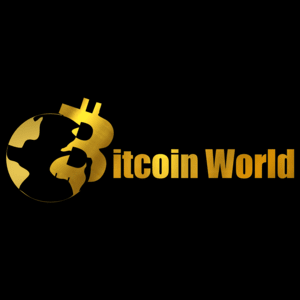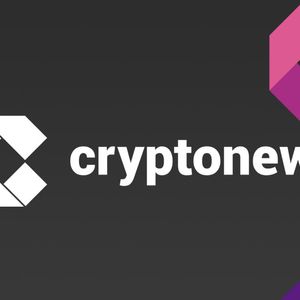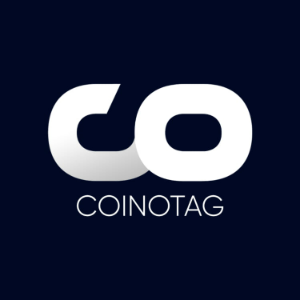US Spot Ethereum ETFs Witness Exciting $18.4M Inflow Surge
5 min read
In the ever-evolving world of cryptocurrency investments, a significant trend is capturing the attention of market observers: positive flows into US spot Ethereum ETFs. After periods of uncertainty and anticipation, these investment vehicles are starting to see notable capital entering the market, signaling growing interest. What Do These US Spot Ethereum ETFs Inflows Tell Us? According to recent data from Farside Investors, US spot Ethereum ETFs experienced a combined net inflow of $18.4 million on April 29th. This wasn’t just a one-off event; it marked the fourth consecutive day of positive flows for these nascent products. While the total inflow figure might seem modest compared to the massive movements seen in Bitcoin ETFs, the consistency is what stands out. Let’s break down the specifics of the day’s activity: Total Net Inflows: $18.4 million Leading Fund: Fidelity’s Ethereum Fund (FETH) FETH Inflows: $25.5 million Fund with Outflows: Grayscale Ethereum Trust (ETHE) ETHE Outflows: $7.1 million Other Funds: No significant changes reported for the day. This data provides a snapshot of investor behavior, highlighting which specific Ethereum ETFs are attracting capital and which might be experiencing profit-taking or rotation. Why Are Positive Ethereum ETF Inflows Important? The sustained positive flows into US spot Ethereum ETFs are significant for several reasons. Firstly, they indicate a potentially increasing appetite among investors, both retail and institutional, for regulated exposure to Ethereum’s price movements. Unlike direct cryptocurrency purchases, ETFs offer a familiar and accessible structure for traditional finance participants. These inflows can be seen as a barometer for market sentiment regarding Ethereum. Positive flows suggest confidence in Ethereum’s future prospects, its role in the decentralized finance (DeFi) ecosystem, NFTs, and its recent transition to Proof-of-Stake. Furthermore, consistent inflows, even if small initially, contribute to the overall liquidity and health of the Ethereum market. As more capital flows into these Spot Ethereum ETF products, it can potentially exert upward pressure on the underlying asset’s price, assuming the ETF issuers are actively purchasing ETH to back their shares. Comparing ETH ETF Flows to Bitcoin’s Debut It’s natural to compare the performance of US spot Ethereum ETFs to their Bitcoin counterparts, which launched with much fanfare and saw billions in inflows (and significant outflows from Grayscale’s GBTC) in their initial weeks. The ETH ETF market is still in its very early stages, and regulatory approval for spot ETH ETFs is not yet finalized in the US, which is a crucial difference. The current positive streak for Ethereum ETF inflows is occurring in a different regulatory environment than the one Bitcoin ETFs entered. While the SEC approved Bitcoin spot ETFs, the decision on spot Ethereum ETFs is still pending, with key deadlines approaching in May 2024. The current inflows are into existing products that might not function exactly like the potential future spot ETFs (like futures-based funds or closed-end trusts like ETHE, which is seeking conversion). However, any positive flow data helps build a case for investor interest and market readiness, which could be factors considered by regulators. Diving Deeper: Fidelity’s Gain, Grayscale’s Outflow in Ethereum ETFs The divergence in flows between Fidelity’s FETH and Grayscale’s ETHE is a key detail from the April 29th data. Fidelity’s product, often lauded for its competitive fee structure and strong brand reputation in traditional finance, attracting significant capital is a positive sign for new entrants in the ETH ETF space. Grayscale’s ETHE, on the other hand, is a different beast. As a closed-end trust, it often traded at a significant discount or premium to its net asset value (NAV). Investors who bought ETHE at a premium might be selling now, or those seeking to move into potentially lower-fee or more liquid structures (like a potential spot ETF) might be exiting. Grayscale is also seeking to convert ETHE into a spot Ethereum ETF, similar to what they did with GBTC. The outflows from ETHE mirror the pattern seen with GBTC after the Bitcoin spot ETFs launched, suggesting investors are rotating or taking profits from the older, potentially less efficient structure. This dynamic between existing products and anticipation of potential new Spot Ethereum ETF structures is a critical factor influencing current flow data. The Road Ahead for Spot Ethereum ETF Approval The big question looming over the market is the potential approval of US spot Ethereum ETFs by the SEC. Several asset managers have applications pending, with final deadlines for some applications falling in May 2024. The regulatory path for Ethereum ETFs is perceived by many as less certain than it was for Bitcoin ETFs. Regulators have raised questions about Ethereum’s classification (security vs. commodity) and its transition to Proof-of-Stake. While the CFTC has regulated ETH futures, the SEC’s stance on the spot market remains a subject of intense debate and speculation. Positive inflow data, like the four consecutive days seen recently, could potentially demonstrate market demand and maturity, but the regulatory decision will ultimately hinge on the SEC’s interpretation of securities laws and market readiness. Actionable Insights for Navigating Ethereum ETFs For investors watching the US spot Ethereum ETFs space, here are a few actionable insights: Stay Informed on Regulation: The SEC’s decision in May is paramount. Keep track of announcements and expert analysis regarding the approval prospects. Understand the Product: Differentiate between existing products (like futures ETFs or ETHE) and the potential future spot ETH ETF. Each has different structures, fees, and risks. Assess Your Risk Tolerance: Cryptocurrency markets, including Ethereum, are highly volatile. ETFs provide easier access but don’t eliminate this inherent volatility. Consider Diversification: As with any investment, consider how an ETH ETF fits into your overall portfolio strategy. Analyze Fees: If spot ETH ETFs are approved, compare the expense ratios of different providers, as fees can significantly impact long-term returns. The current positive trend in Ethereum ETF inflows is an encouraging sign of growing investor interest, but the market is still navigating regulatory uncertainties and the evolution of available investment products. Conclusion: A Glimpse of Growing Interest The streak of positive net inflows into US spot Ethereum ETFs, highlighted by the $18.4 million on April 29th, offers a compelling glimpse into growing investor confidence and interest in Ethereum. While regulatory approval for spot ETH ETFs in the US remains the next major hurdle, the consistent, albeit modest, influx of capital suggests that market participants are increasingly looking for regulated ways to gain exposure to the second-largest cryptocurrency. The dynamic between different funds, like the inflows into Fidelity and outflows from Grayscale, further illustrates the market’s evolution as it anticipates potential new structures. This period is undoubtedly exciting for the Ethereum ecosystem, signaling potential maturation and broader acceptance. To learn more about the latest crypto market trends, explore our article on key developments shaping Ethereum institutional adoption.

Source: Bitcoin World



